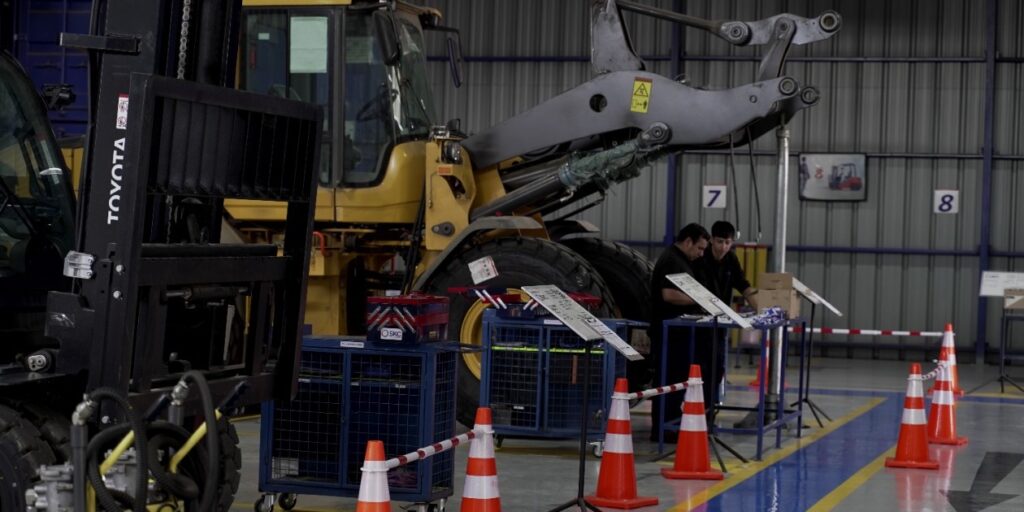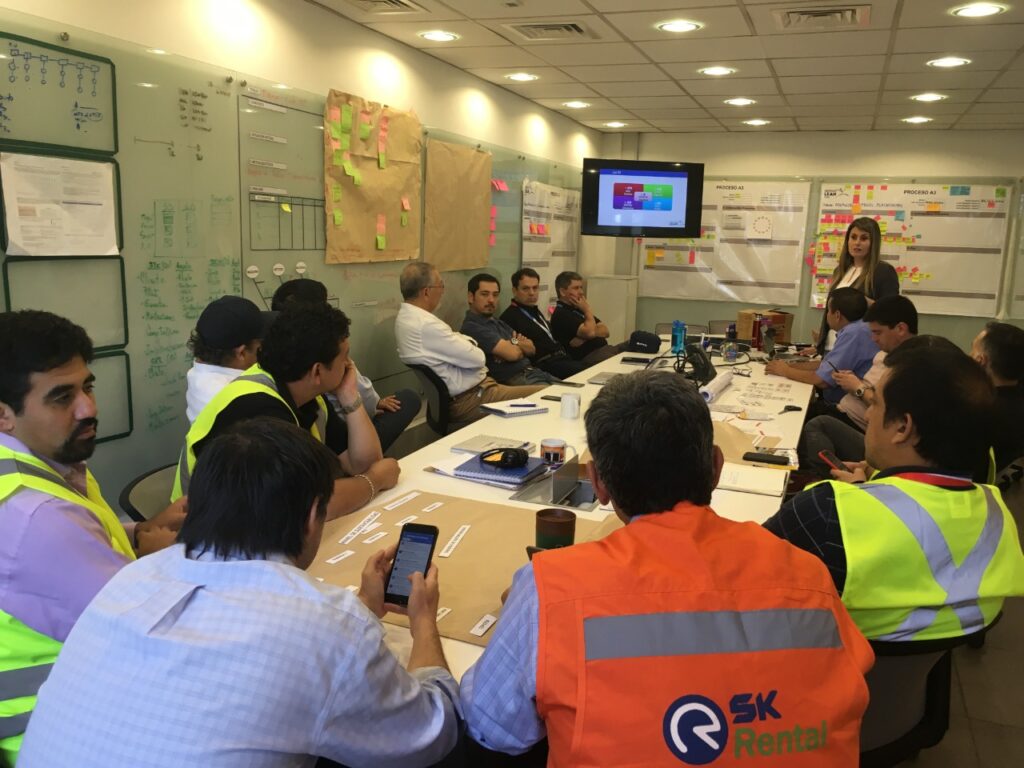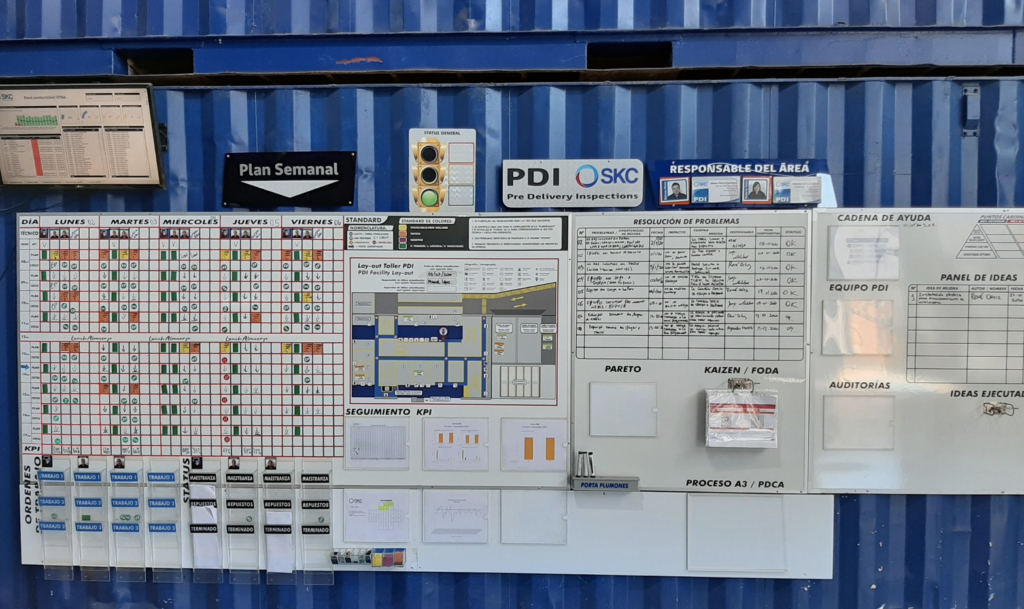An Enterprise-Wide Cultural Transformation
Jul 29, 2022

CASE STUDY – A Chilean company selling and servicing vehicles and equipment for a variety of industries has made of humility the leading trait of its cultural transformation, with great results.
Words: Miguel Pastor Furelos
“The only true wisdom is in knowing you know nothing,” said Greek philosopher Socrates. This well-known mantra embodies our company culture at SKC. At a time when the word “transformation” is on everybody’s lips and so-called experts swear they have found in digitalization the answer to everyone’s problem, we decided to base our own turnaround on the all-important concept of humility.
Our need to transform became clear five years ago, when we started to ask ourselves what kind of business we wanted to be and how we could adapt to a changed world. On that occasion, we decided to review our company’s mission and defined a strategic intent with five pillars: end customer, manufacturers (of the machinery and equipment we sell and service), business model, people, and technology. (We have recently added a sixth idea, sustainability – intended as financial, social, and environmental).
We see technology as a way to support processes in the delivery of more value to customers and stakeholders, not as an end in itself. We also believe you can’t digitalize what’s not gone through the sieve of a cultural transformation, which is why our True North was from the very begin to change our way of thinking.
Once we defined the core ideas supporting our strategic intent, we began to look for a framework that could embody them. We had a few people with some lean experience already, and it didn’t take long for us to realize that of all the methodologies out there Lean Thinking is the only one that could lead to the mindset shift we were after. (We refer to it as Lean Kaizen, to further emphasize the importance of continuous improvement.) Knowing we knew nothing and armed with a good dose of humility and curiosity, we began as lean self-learners to study and learn as much as we could about Toyota and Lean Thinking.
Towards the end of 2017, we picked an area to run a pilot project, a bounded experiment to test the new idea of business we had come up with. It was the first time we tried to re-engineer an entire process, taking logistical services that were scattered around the business and integrating them. The concept was basic, traditional centralization of administration with distributed processes. Of course, centralizing wasn’t meant as a way for the Corporate Office to dictate the way to work, but as the creation of a standard that could be replicated in different scenarios without compromising the stability of process.
In the first months of 2018, the project was completed, and we saw a 54% reduction in the import time for spare parts. This generated quite a bit of interest across the business and led to more experiments in other departments – including our workshops. To achieve the long-term transformation of the business, we have to ensure everyone that thinks and acts lean. Therefore, we went for a bottom-up approach, looking for the processes that are deeply rooted in the core operations of the company and trying to get some quick and visible results that would facilitate the spread of lean culture.
The key lesson we learned in that first experiment, however, was that (as Socrates taught us) we knew nothing. So, we asked the Lean Institute Chile to support us in the new challenge of making Lean Thinking part of our company’s ecosystem. They have been supporting us ever since as we spread lean across the business (today, they even work directly with top management on the company’s hoshin). Their help with lean, coupled with the great learnings on Kaizen we have obtained from our study of Toyota practices, has allowed us to develop our unique approach to continuous improvement.

SOME OF THE THINGS WE DID
As mentioned, one of the main things we focused on was connecting processes that were previously disjointed (and often physically separated). We brought together, for example, the purchasing area, international factory, the comex department (foreign trade), the logistics department, accounting and the distribution center, creating visibility of the end-to-end process. The result was a significant reduction in the lead-times for supplying parts to our customers.
When we opened an A3 on the quality of our service, we also gave people visibility of the entire value chain. For the first time, people sitting at their desks in different offices were becoming aware of each other’s work and of their contribution to the delivery of value to customers.
Thanks to our Lean Kaizen approach, we also reduced the percentage of obsolete spare parts in our inventory and improved our workshop’s productivity (which we previously didn’t even measure). We defined a standard, identified the right performance indicators, created a project team that opened an A3 on the process, and reviewed the way we did the work. We started to measure how long equipment stayed in the repair bays, for example, to understand how much capacity we were using at any given time. As we chipped away at the waste in the process, we acquired velocity and with it more revenue.
AN ACCELERATOR OF CHANGE
As we initiated more and more lean projects, we discovered how basic tools (like 5S, daily management, or spaghetti diagrams), coupled with discipline and resolve, could help us to transform the way people think. Little by little, the business became more inclusive and horizontal. In the teams working on lean improvements, there was no place for traditional hierarchy: we were all people trying to contribute to the achievement of a consensus around opportunities for improvement that we then turned into countermeasures to our problems.
The most interesting part is that people became autonomous and started to own the processes and understand the importance of standards and tools. They no longer needed the boss to breathe on their neck and asking them to “do 5S” and keep their desk tidy, for example, because they were aware of the impact of tidiness on productivity and of the importance of productivity for the health of the business.
Not everyone got on board right away, of course, but when we came face to face with resistance, we were able to rely on another powerful lean tool: visualization. Anything that is made visible becomes manageable, and then it’s up to people. In other words, lean makes you capable of tackling a problem, but the decision to get out of your comfort zone and interiorize its principles and techniques is entirely yours and depends on your attitude.
We know that lean transformations are a long process, but in practice, we found that lean turned into an accelerator of change. Indeed, over time, our efforts to establish a lean culture have become the main driver of SKC’s transformation, with continuous improvement and learning at the heart of what we do.
For example, when we decided to get three ISO certifications (9001, 14001 and 45001), we were able to do so in just six months – a process that typically takes four years. This was entirely thanks to the lean culture we have been working hard to establish: our workshops were already organized to work efficiently, we already had solid safety protocols in place, we already listened to people routinely to learn about problems at the gemba, and so on. We were so successful with the ISO certifications in our headquarters in Santiago that we decided to do the same in our branch offices, too, which we achieved in three months.

A BUSINESS MODEL FOR COMPETITIVENESS
There have been countless lessons for us on this journey. We have learned, for example, that by listening to our people with humility, we can always find a way to success. We have learned that PDCA has to be the foundation of every problem-solving effort. We have learned that accountability is everything, which is why every countermeasure we decide to try has someone’s name written next to it, to ensure ownership. We learned that traditional company hierarchy goes against the smooth delivery of value to customers, because it creates walls between departments and levels of management. We have learned that the velocity you need in today’s world requires everyone to have clarity of the end-to-end process and to be humble enough to flag up mistakes and problems. We have learned that when people own problems, stay humble, and see the results of their work, they move closer and closer to a better version of themselves.
I believe that the only way to take a step forward is accepting that sometimes you take steps backward. Lean teaches us to try new things and make mistakes quickly and cheaply. To transform our culture entails a never-ending effort and it is up to us leaders to stick to our guns until people become autonomous thinkers and problem-solvers.
Because we made the conscious choice of institutionalizing lean within our company, I’d say around 75% of the 1,100 people working at SKC are now participating in lean one way or another. We have had more than 50 A3s to date in several business areas (this is one our key tools for problem solving and, interestingly, a large number of these A3s was developed during the pandemic as a way to be together even while being apart), and constant improvement activities at the gemba. We are determined to continue on this path, until Lean Thinking permeates every aspect of our company’s life. We see lean as a business model founded in the transformation of people’s minds, and as a framework that can differentiate us in a competitive market. It is key to ensuring the future of SKC is bright.
THE AUTHOR

Miguel Pastor Furelos is Operations Manager at SKC in Chile.
Original Article: https://planet-lean.com/lean-culture-skc/
Stay In Touch.
Subscribe to our newsletter and exclusive Leadership content.
We respect your privacy and won’t spam your inbox
